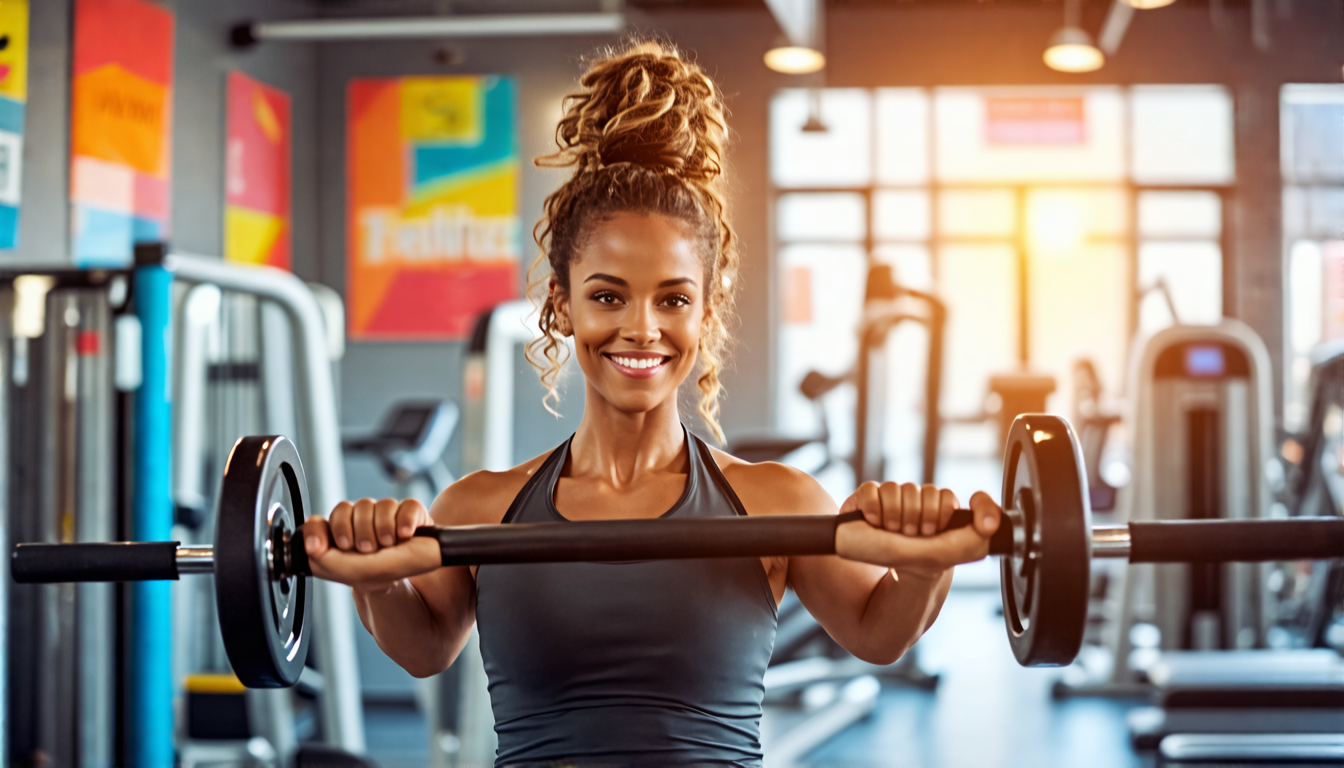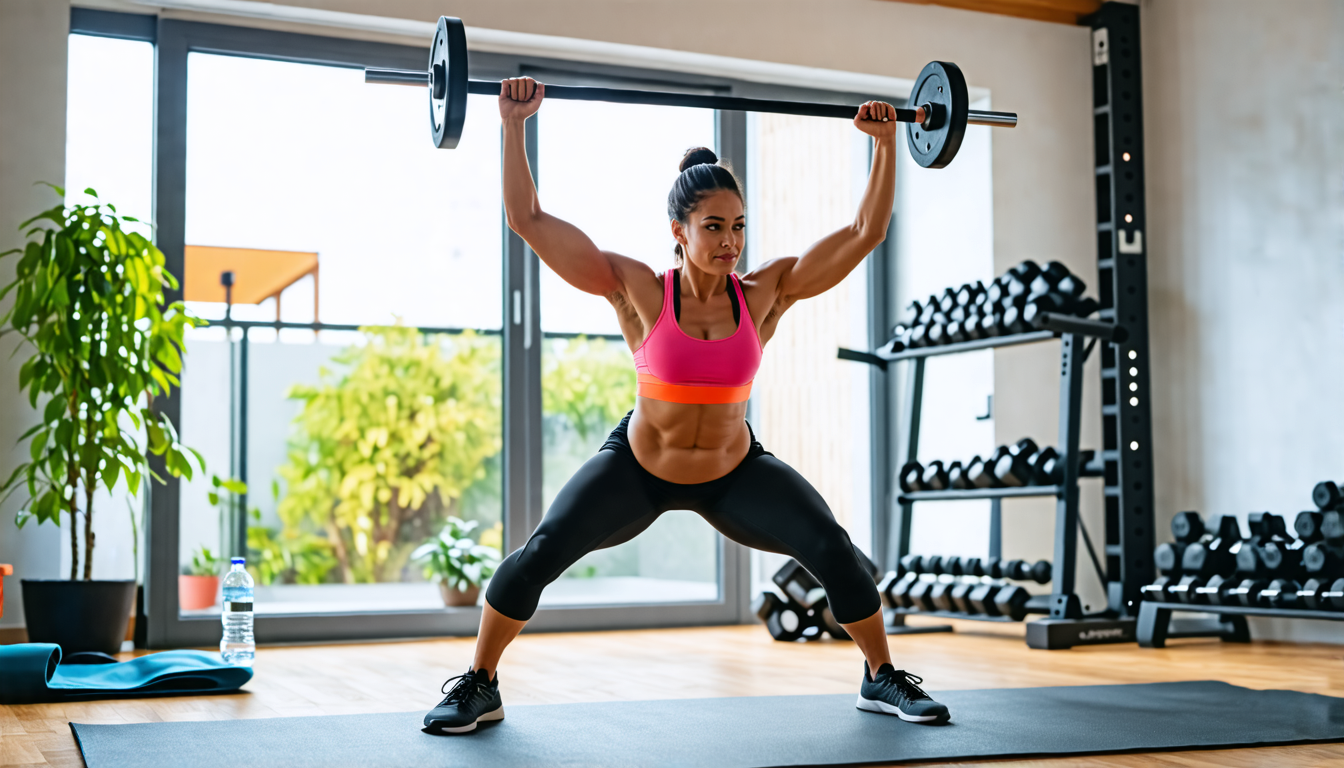Are you looking to kickstart your home fitness journey with a versatile and effective tool? Look no further than the fitness bar. Ideal for beginners, fitness bars offer a perfect blend of convenience and adaptability, allowing you to perform a variety of exercises right from the comfort of your home. Whether you’re aiming to build strength, improve flexibility, or simply stay active, incorporating a fitness bar into your routine can yield impressive results without the need for bulky equipment. The beauty of fitness bars lies in their simplicity and versatility; they are beginner-friendly and can be used to target multiple muscle groups, making them a valuable addition to any home gym setup. In this article, we’ll explore the best workouts for beginners using a fitness bar, providing you with detailed descriptions, step-by-step instructions, and tips to ensure you get the most out of your exercise sessions. With these exercises, you’ll be well on your way to achieving your fitness goals while enjoying the convenience and comfort of your own home.
Introduction to Fitness Bar Workouts for Beginners
A fitness bar, also known as a workout bar or body bar, is a versatile piece of exercise equipment that can significantly enhance your home fitness routine. Typically made of metal or hardened plastic, fitness bars come in various weights, making them suitable for all fitness levels. For beginners, fitness bars can be an excellent introduction to strength training, balance improvement, and overall physical fitness.
One of the primary benefits of using a fitness bar is that it combines both resistance training and functional movements. This helps in building muscle mass, increasing strength, and improving flexibility. Additionally, unlike bulky gym equipment, fitness bars are portable and relatively inexpensive, making them an ideal choice for home workouts. They provide a low-impact way of exercising, which is crucial for individuals new to fitness regimens as it reduces the risk of injury.
Starting with beginner-friendly exercises is essential for several reasons. First, it allows you to build a strong foundation and gradually adapt to the physical demands of strength training. Many people make the mistake of diving straight into advanced exercises, which increases the risk of injury and can lead to burnout. By focusing on foundational movements, you enable your body to develop proper form, coordination, and muscle memory. This will set you up for success as you progress to more challenging workouts.
Using a fitness bar also helps you understand and control your body movements better. When you start with simple exercises, you get the opportunity to focus on aligning your body correctly, which is crucial for avoiding injuries and getting the most out of your workouts. Emphasizing proper form over heavy lifting is especially important for beginners because it ensures that you are engaging the correct muscles and not straining your body unnecessarily.
In addition to physical benefits, starting with beginner-friendly exercises can have a positive impact on your mental well-being. Successfully completing workouts can boost your confidence and motivate you to stick with your fitness routine. It also helps in setting realistic goals and tracking your progress. Making consistent, incremental progress is more sustainable and enjoyable than opting for an all-or-nothing approach.
Another important aspect is the versatility of fitness bars. As a beginner, you can use them for a wide range of exercises that target different muscle groups. From squats and lunges to overhead presses and rows, the possibilities are nearly endless. This versatility ensures that you won’t get bored and will be able to keep your workouts diverse and engaging. It also means that you can work on multiple aspects of your fitness, including strength, endurance, and balance, without needing a lot of different equipment.
Furthermore, fitness bars can help you develop a better understanding of your body’s capabilities and limitations. By starting with manageable weights and exercises, you get to learn how your body responds to different movements and loads. This self-awareness is foundational for setting achievable goals and tailoring your fitness routine to suit your unique needs and preferences.
Integrating fitness bar workouts into your routine also encourages a holistic approach to fitness. Many exercises involving fitness bars are compound movements, meaning they work for multiple muscle groups simultaneously. This not only makes your workouts more efficient but also improves your coordination and functional strength, making everyday activities easier.
In summary, fitness bars offer an accessible and effective way to begin your fitness journey. By starting with beginner-friendly exercises, you build a solid foundation that enables you to progress safely and effectively. The diverse range of exercises that can be performed with fitness bars ensures a comprehensive full-body workout, laying the groundwork for a balanced and sustainable fitness routine.

Top 5 Beginner Workouts Using a Fitness Bar
When beginning your fitness journey with a home fitness bar, it’s crucial to focus on exercises that not only introduce you to the equipment but also provide a full-body workout. Here are the top 5 beginner exercises designed to help you get the most out of your fitness bar.
1. Back Squats
Back squats are a fundamental exercise that targets the lower body, particularly the quadriceps, hamstrings, and glutes. Using a fitness bar for back squats helps to improve your balance and posture.
Step-by-Step Instructions:
- Begin by placing the fitness bar across your upper back, ensuring it rests comfortably on your shoulders.
- Stand with your feet shoulder-width apart, toes pointing slightly outward.
- Keeping your chest up and core engaged, slowly lower your body by bending your knees and hips. Aim to have your thighs parallel to the floor.
- Pause for a moment at the bottom, then push through your heels to return to the starting position.
Tips for Proper Form:
- Keep your weight evenly distributed through your feet.
- Avoid allowing your knees to cave inward.
- Maintain a neutral spine throughout the movement.
2. Overhead Press
The overhead press is excellent for building upper body strength, particularly the shoulders and triceps, while also engaging the core. Using a fitness bar makes this exercise robust for form and balance training.
Step-by-Step Instructions:
- Stand with your feet hip-width apart, holding the fitness bar at shoulder height with an overhand grip.
- Engage your core and press the bar overhead until your arms are fully extended.
- Hold briefly at the top, ensuring your biceps are close to your ears.
- Lower the bar back to shoulder height in a controlled manner.
Tips for Proper Form:
- Keep your elbows slightly in front of the bar.
- Don’t arch your lower back; keep core tight.
- Lock your arms at the top without shrugging your shoulders.
3. Barbell Row
The barbell row is a fantastic workout for the back muscles, specifically targeting the lats, rhomboids, and traps. This exercise enhances your upper body strength and builds a solid foundation for more complex movements.
Step-by-Step Instructions:
- Stand with your feet shoulder-width apart, knees slightly bent, and hinge at the hips to lower your torso until it’s nearly parallel to the floor.
- Hold the fitness bar with an overhand grip, hands just outside your knees.
- Pull the bar towards your lower chest, squeezing your shoulder blades together.
- Lower the bar back to the starting position in a controlled manner.
Tips for Proper Form:
- Maintain a neutral spine and a slight bend in your knees.
- Avoid using momentum; focus on muscle contraction.
- Keep your elbows close to your body during the lift.
4. Deadlift
The deadlift is one of the most effective exercises for building lower body strength. It works the hamstrings, glutes, and lower back. A fitness bar will help you learn the proper technique and form.
Step-by-Step Instructions:
- Stand with your feet hip-width apart and the fitness bar over your mid-foot.
- Bend at your hips and knees to grip the bar with an overhand grip.
- Lift the bar by extending your hips and knees simultaneously, keeping the bar close to your body.
- Stand fully upright, then lower the bar back to the ground with control.
Tips for Proper Form:
- Keep your back straight and chest up throughout the movement.
- Lift with your legs, not your back.
- Set the bar down by hinging at the hips rather than bending your back.
5. Bench Press
The bench press is a staple for building upper body strength, targeting the chest, shoulders, and triceps. With a fitness bar, you can ensure balanced muscle development and improved stability.
Step-by-Step Instructions:
- Lie on a bench with your feet flat on the floor and hold the fitness bar with an overhand grip, hands slightly wider than shoulder-width apart.
- Lift the bar off the rack and position it above your chest, arms fully extended.
- Lower the bar to your chest, just below your nipple line, in a controlled manner.
- Push the bar back up to the starting position, fully extending your arms.
Tips for Proper Form:
- Keep your elbows at a 45-degree angle to your body as you lower the bar.
- Engage your core and glutes for stability.
- Ensure the bar moves in a straight line and maintain control throughout the exercise.
In conclusion, fitness bars are an incredibly versatile and effective tool for individuals at any fitness level, particularly beginners. As we’ve explored, starting with beginner-friendly exercises can help you build a strong foundation, improve your form, and gradually increase your strength and endurance. The top five workouts we’ve discussed—ranging from the barbell squat to the overhead press—offer a comprehensive introduction to fitness bar routines. Each exercise targets multiple muscle groups, promoting balanced muscle development and helping you to achieve a well-rounded fitness regimen.
By following the step-by-step instructions and paying attention to the tips provided, you can ensure proper form and technique, which are crucial for both effectiveness and injury prevention. Remember that consistency and progression are key; as you become more comfortable with these exercises, you can gradually increase the weight and complexity of your routines.
Incorporating a home fitness bar into your workout regimen not only offers the flexibility to exercise in the comfort of your own home but also opens the door to a wide range of exercises that can be adapted as your fitness level improves. Whether you aim to build strength, improve muscle tone, or enhance overall fitness, beginning with these foundational exercises can set you on a successful path toward achieving your goals.

